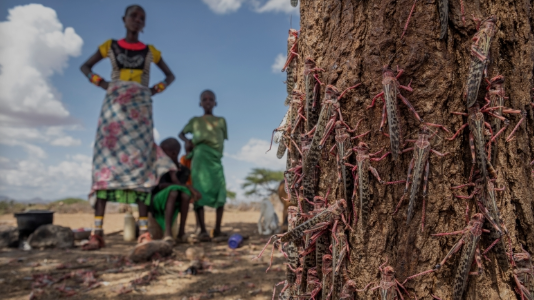Rewriting New Chapter of Locust Crisis
You are here

An unprecedented desert locust outbreak destroying millions of hectares of crops and pastures is worsening food security and livelihoods of millions in East Africa, Middle East and Asia. In Kenya, it represents the most devastating outbreak the country has experienced in 70 years. Two neighboring countries Somalia and Ethiopia are facing the worst desert locust crisis in 25 years. Yemen in the nearby Arabian Peninsula is also threatened as 18 million Yemenis are already in acute food insecurity and depend on international humanitarian aid. Damages in crops are also reported in India and severely in Pakistan where the worst locust infestation in 25 years will likely result in £4.3 billion crop losses. As reported by Locust Watch, widespread rains in late March and May in parts of Kenya, Somalia and Ethiopia created conditions conducive to desert locust development. Without proper control, rains continuing in June could result in another devastating wave in the region from September through December this year.
Locusts are considered the most destructive migratory pests in the world. An average swam of 40 million adults can travel more than 90 miles in a day as they ride the wind, devouring almost all vegetation along the path with the capacity to consume the same amount of food in one day as 35,000 people, according to FAO. Without timely control of the locust population, the Horn of Africa as the epicenter of the outbreak, which already has 22 million severely food insecure people and over 12 million internally displaced, will soon be facing a critical food security emergency. Agricultural production and associated household incomes of farmers in those agriculture-dependent economies will continue being adversely affected. According to World Bank’s estimate, damages and losses could amount to as much as US$8.5 billion in 2020.
To read more, please click here to access the full blog.
Relevan Articles on Locust Crisis:
- Desert Locust Upsurge: Global Response Plan (January - December 2020) by Food and Agriculture Organization of the United Nations
- Locust Watch by Food and Agriculture Organization of the United Nations
- COVID-19 Global Hub featuring all the United Nations Office for the Coordination of Humanitarian Affairs (OCHA) COVID-19 Reports
